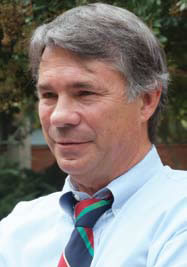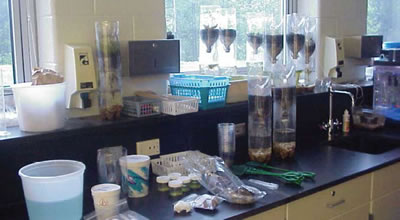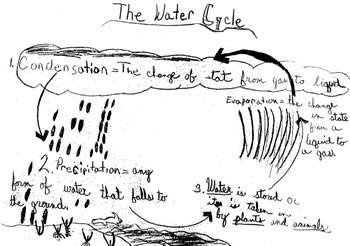College of Education and Human Development
Broadening the Horizons of Students with Disabilities
May 3, 2010
University Professors Margo Mastropieri and Thomas Scruggs in Mason's Graduate School of Education have dedicated much of their research careers to studying how students with special needs learn. Few researchers in the United States concentrate on the mix of special education and content learning.

Margo Mastropieri
Their research has explored what conditions must be present for students in special education to engage in learning and achieving. Their latest efforts focus on promoting science learning for students with disabilities, and their research has revealed interesting insights into science learning.

Thomas Scruggs
One of Scruggs and Mastropieri's studies involved a fifthgrade class that was exploring ecosystems. The children were divided into two groups. The control group only read the textbook. The experimental group built selfcontained ecosystems out of soda bottles. The researchers set up the exercise so that students with a disability each worked with two general education students in the experimental group. At the end of the unit, the students with disabilities (which included learning, physical, and emotional disabilities and mental retardation) in the experimental group outperformed considerably all students in the control group and even scored as a group in the middle of the experimental class.
The researchers must often adapt learning strategies to accommodate students with disabilities, while at the same time determine whether the process or the outcome is more important.
"It forces you to ask yourself, 'Well, is this process the most important? What is it we really have to learn?'" says Scruggs."By helping focus on the most important aspects of science learning, I think it really helps the teacher and the whole class."
"Some activities involve a lot of complex thinking and action that aren't really part of the learning objective," adds Mastropieri. "The activities still result in learning but may not be the main goal of the original lesson."
A good example is a study that involved a blind student. The class was studying a microscope unit, and the research team needed to develop an experience for the blind child that was comparable to that of a general education student.

Students built selfcontained ecosystems in plastic soda bottles.
To accommodate the blind student, Mastropieri and Scruggs made a three-dimensional model of the onion cells on the microscope slide the class was viewing. They glued herbs and spices to paper, and the blind student was able to feel what the others could see. The general education students also were able to benefit from this model, which reinforced through touch what they saw on the slide.
"Science really involves using the means to expand all of our senses," says Scruggs. "That goes for everybody. To see the things you can't normally see. To hear things you normally don't hear. To think about things you normally don't think about."

Students view onion skin cells.
General education students not only can benefit from the learning strategies developed for students with disabilities, but they also can learn about cooperation through their interactions with special education students. Mastropieri and Scruggs worked with a mainstream fifthgrade class in Arizona where three children were in wheelchairs and one had severe arthritis. The class activity involved measuring reaction time with a buzzer.
The boy with the arthritis wasn't able to touch the buzzer with his hands, but as the activity evolved, his disability proved not to be an obstacle. His partners placed the buzzer on the floor so that he could press it with his foot. Meanwhile, the partners of the wheelchair-bound children placed the buzzers where it was easiest for each child to reach it.
"What was really interesting to me was that in a classroom where teachers were very good at accommodating children of diverse abilities, that one would also start to see some of the general education children becoming very good at coming up with adaptations and accommodations for their partners," says Mastropieri.

A student's interpretation of the cycles learned in class.
One of the more poignant research cases Mastropieri and Scruggs have worked on had a second-grade child with a terminal disease who had been mainstreamed into a lifecycles class. For the researchers, the experience presented the question of why science is taught in the first place. One could easily adopt the attitude that it's of little benefit to teach a terminally child about science, because most likely, this child will never be able to use the skills as an adult, much less as a scientist. As emotional as the issue was, the subject of lifecycles—studying the stages of birth, development, and death—turned out to be completely relevant and helped articulate weighty issues facing the student and the class.
"This forced us to examine the worth of science education beyond preparation for future careers," says Scruggs. "Science, we came to see, is valuable to people at the time they study it, in that it broadens the individual to the realities of the universe and his or her role in it."
—Devon Madison
